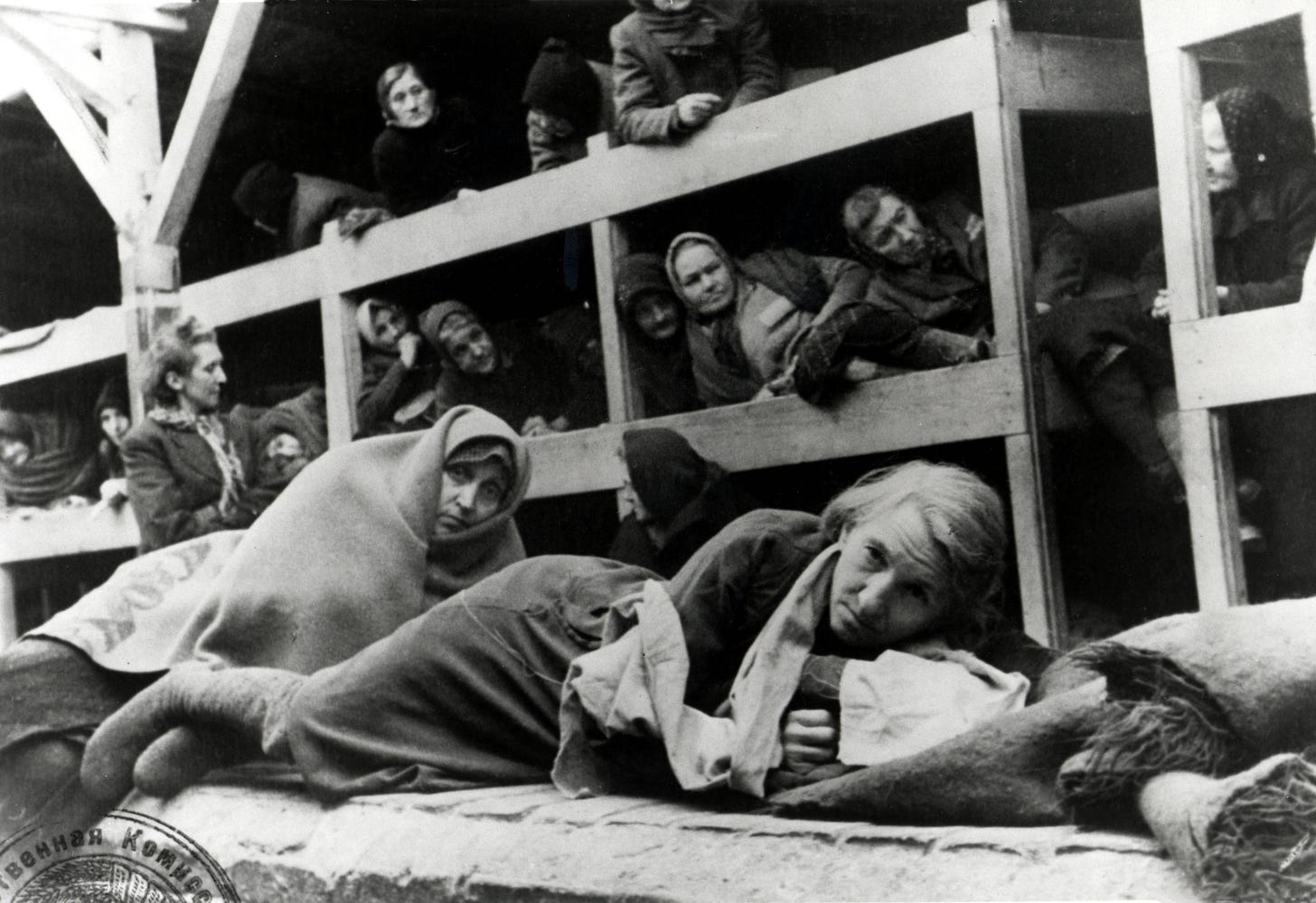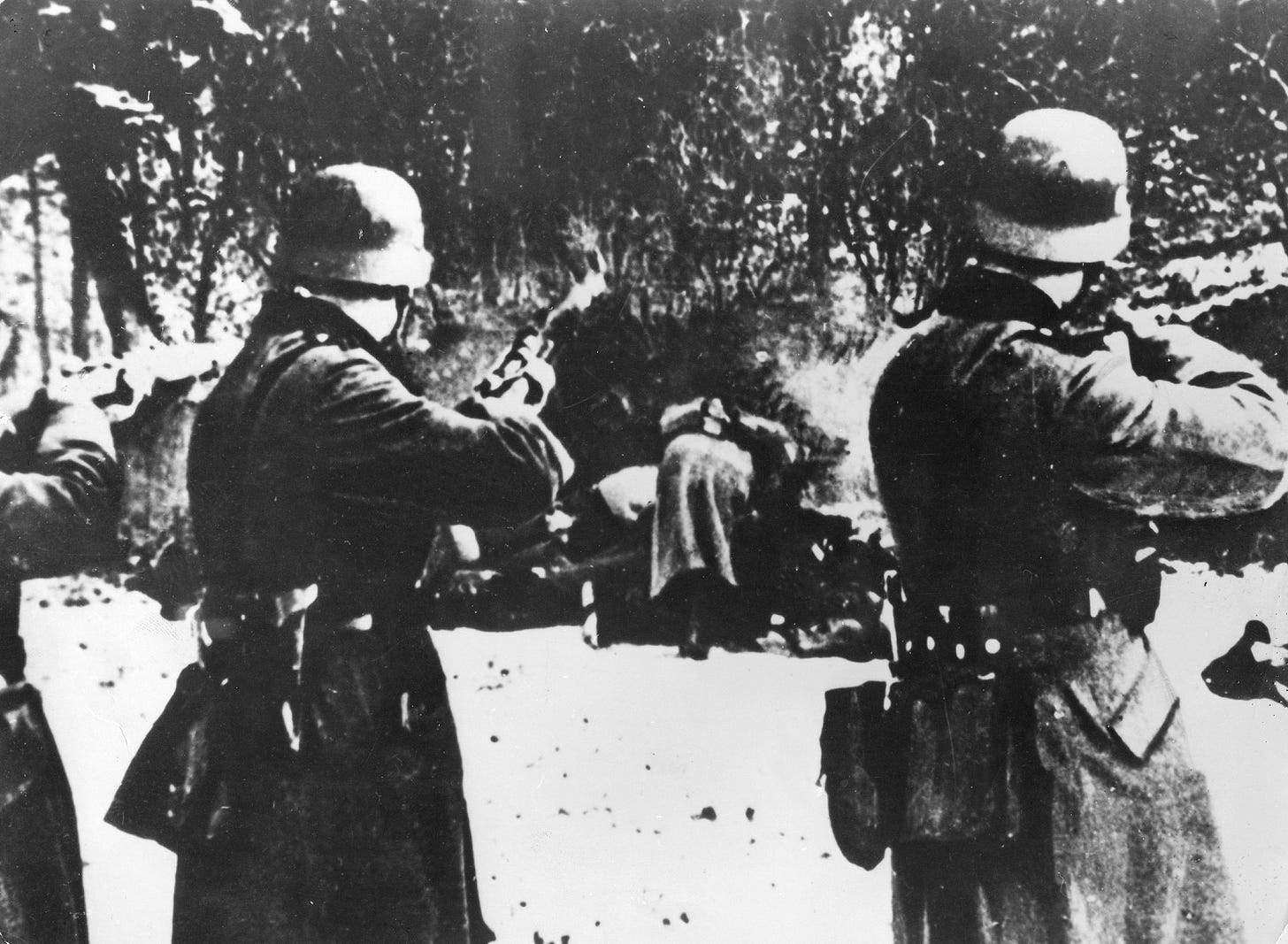"You Have a Mother"
Description

BROOKLYN, N.Y — Lola Mozes’ childhood came to an end in the fall of 1939 at a small bridge in Poland. She was 9 — seated in a horse-drawn wagon, her back propped against her family’s silver Sabbath candelabra, which was wrapped in a blanket — when she saw the aftermath of a German bomb attack. The sight of human bodies, along with eviscerated horses gasping in pain and struggling to rise despite their gaping wounds, reduced her to tears and panic. Her mother, Helena Rewitz, born Schwimer, who would hover over her daughter like a guardian angel later in a Jewish ghetto and the Auschwitz-Birkenau death camp, took the terrified child into her arms.
I sat with Lola Mozes at her dining room table in Brooklyn on Friday. Short and petite, with curly black hair and white gold hoop earrings, she had a soft, infectious laugh, an impish sense of humor and fine facial lines that she inherited from her father and mother. Her charm and warmth were girlish and slightly coquettish.
“I am the great pretender,” she said, smiling. “It is always there, what I went through. I am tormented by it. It keeps repeating and repeating itself in my head.”
Lola grew up living next to her family’s small grocery in Katowice, a city in southwestern Poland. The language at home was German. She learned Polish in school. Her parents, especially when they wanted to talk privately, spoke Yiddish. Her parents and older brother celebrated the Sabbath and went to synagogue on religious holidays but lived as secular Jews. Her father, Emil, who sang arias as he bathed in the mornings, dressed in imported German suits and spats when he left the house. They lived in a working-class section of the city. Catholic children in the neighborhood taunted her as a “Christ killer” and once pushed her brother Oskar off a tram and beat him. But nothing prepared the family for what was to come. A dark future was only hinted at when the parents, their faces knotted in consternation, listened to Adolf Hitler on the radio.
The bloody scene at the bridge would foreshadow a crucible of mass murder and extreme deprivation lasting six years. For Lola, playing with her favorite doll, skating, swimming and picking out candy from her father’s grocery was replaced by a bitter struggle to survive. Ogres — including a drunken SS officer in the ghetto who used to hold her on his lap and complain about his boots being soiled by the blood of his victims, including the infants he dashed against walls — rose up like monsters in medieval fairy tales. Concentric circles of death and life would radiate around her. Her parents’ fierce love seemed, often, no match for the murderous intent of the armed and the powerful who held the family in their grip.

Lola’s family was herded with other Jews in 1941 into the ghetto in Bochnia, along the river Raba in southern Poland. The ghetto was surrounded by a high wooden fence. It was divided in two parts — Ghetto A and Ghetto B. Ghetto A housed the 2,000 Jews who worked in German factories and workshops where they made shoes, underwear, uniforms, gloves, socks and other items for the German army. The Jews in Ghetto B had no jobs. Many were elderly and sick. They lived in extreme poverty and were malnourished. Many Jews pooled what little they had and formed communal kitchens. The Germans segregated the men, including the husbands and fathers, from women at night. Lola and her family lived with her aunt, who had been well off before the war, in a large wooden house that had been incorporated into the ghetto.
“At one point they told us to stay in our houses,” she said. “I don’t remember when. I peeked through the window and saw strong young men who used to work in the salt mines marching. Every 10th or fifth man was being shot. In the morning there was a strange odor. It was nauseating. We peeked through the curtains. There were wagons with dead bodies. They were stripped. There were puddles of blood in the gutters. We went back to work the following day. We worked 12-hour shifts. For the morning shift we left when it was dark. I remember [when we went back to work again] it was raining. I was walking with my friend. I was carrying my bread. It fell on the ground. My friend said, ‘It fell in the blood.’ We thought this was very funny. We started laughing. I picked it up and brought it home after work and we ate it. It was too precious to throw away.”
Lola had a friendship with a gentle boy who lived with his family in the B section of the ghetto. He cut up newspapers and made a little book he lent to her. It was about a seventh-century rabbi named Sabbatai Zevi who claimed to be the Jewish Messiah and walked from town to town promising to save the people. “He took me to where he lived,” she said. “It looked like a hovel. There were rags on the floor. It was dirty. There were a lot of people, especially old people. The stench was terrible. He was the nicest boy. I said, ‘How can people live like that?’ He was so embarrassed. I will never forget how embarrassed he was. He had been in my aunt’s house where each family had a room. My aunt’s house was clean. We had a stove. There was some heat. I don’t know what happened to him. Those in Ghetto B were the first to go in the transports [to the death camps].”
Her father constructed a small, underground bunker in a wooden shed that was filled with sawdust. When the deportations began in 1942 the family would hide in the bu





